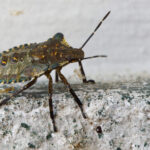Since many different species of insects are small and green in color, the term “tiny green bugs” could apply to a wide range of insects. It is hard to pinpoint the precise kind of insect you are referring to without further information or a more detailed description. Nonetheless, the following are some options:
Classification of tiny green bugs
Table of contents
Aphids
A class of tiny green bugs which are small, soft-bodied insects with a variety of colors, including green, are called aphids. They are frequent pests in agricultural and gardening environments. These microscopic green insects are well-known for penetrating plant tissues with their unique mouthparts in order to feed on plant sap.
The following are some essential traits and details about aphids:

Color
Aphids are mostly green in color, but they can also be found in pink, brown, black, or yellow tones.

Antennae
Generally speaking, aphids have long, thin antennae.
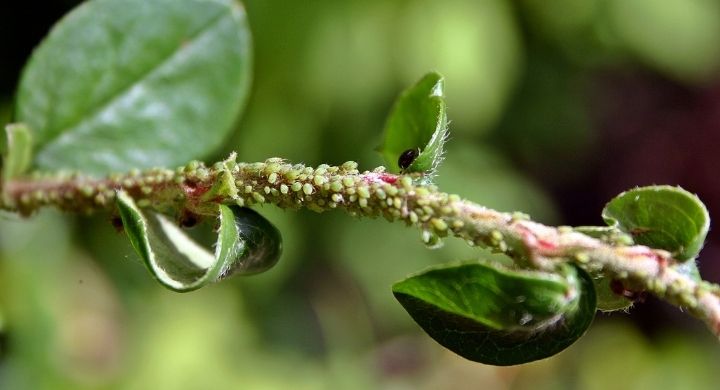
Lifecycle
Through a process known as parthenogenesis, female aphids can give birth to live offspring without mating, allowing them to reproduce quickly. Large populations may develop swiftly as a result.
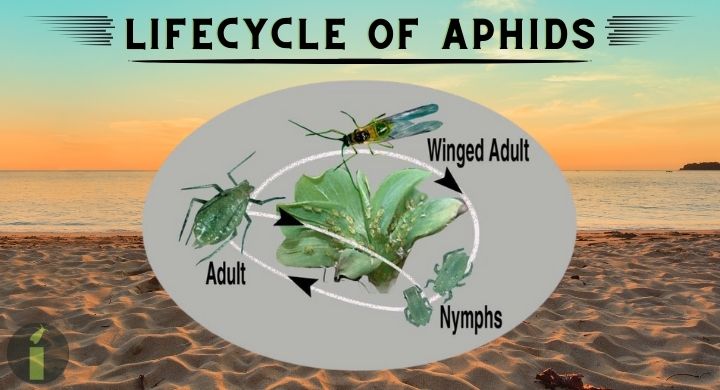
Damage
By taking out the sap, aphids can harm plants by weakening them and causing twisted or stunted growth. Additionally, they release a sticky material known as honeydew, which attracts ants and encourages the growth of sooty mold on plants.
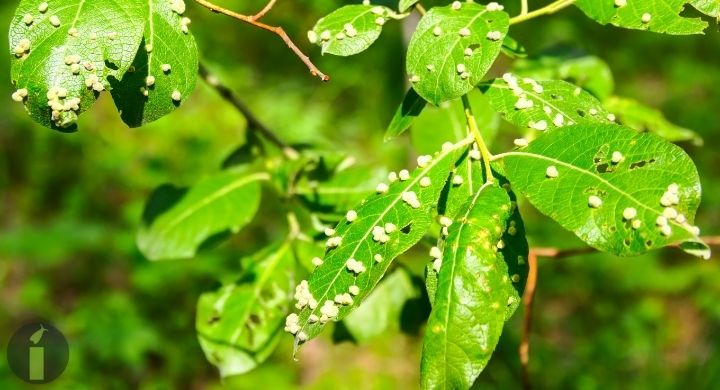
Natural Predators
Natural enemies of aphids include parasitic wasps, lacewings, and ladybugs, which can aid in managing their populations.

Leafhoppers
Hemiptera is an order of small, wedge-shaped insects that includes a class of tiny green bugs called leafhoppers. They are frequently found on plants and are well-known for their ability to jump. The following are some essential traits and details about leafhoppers:

Appearance
Typically, leafhoppers are tiny insects that are between 1/8 and 1/2 inch long. Their bodies have a characteristic wedge shape, with a broad, flat top and a tapering bottom.

Color
The colors of leafhoppers can range from green to brown to yellow, or even a mix of these hues. Certain species’ wings are covered in patterns or markings.

Antennae
Their eyes are typically big and prominently positioned on the sides of their heads, and they have short antennae.

Jumping Ability
Like grasshoppers, leafhoppers can jump very well and can move quickly when startled by using their strong hind legs.

Feeding
With their needle-like mouthparts, the majority of leafhoppers pierce the plant tissue to feed on sap. Certain species can spread viruses that cause plant diseases while they feed.
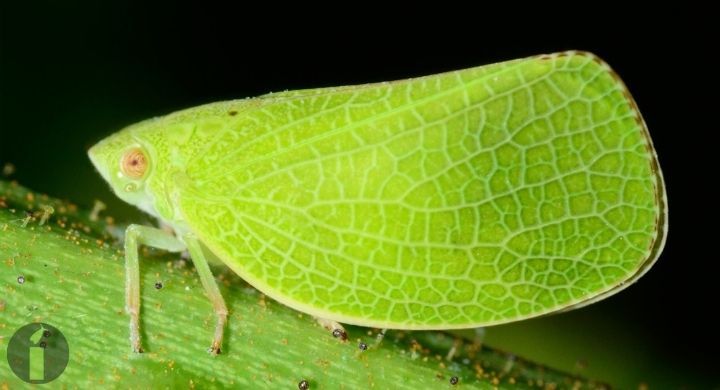
Lifecycle
Leafhoppers go through three stages of incomplete metamorphosis: the egg, nymph, and adult. The nymphs are smaller than the adults and do not have fully formed wings.

Habitat
Common habitats for leafhoppers include gardens, fields of crops, and other areas with lots of vegetation.
While some leafhopper species are deemed pests because they feed on plant sap and can harm plants, other species are vital to ecosystems and do not seriously harm crops. Leafhopper populations can be managed by natural predators like birds, spiders, and predatory insects. Insecticidal soaps or other targeted insecticides may be used to control leafhoppers if they become a problem, but it’s crucial to take the ecosystem’s health and beneficial insects into account as tiny green bugs are beneficial as well.

Spider Mites
Tetranychidae is the family of tiny arachnids that includes a class of tiny green bugs called spider mites. They share a close relationship with ticks and spiders. These tiny pests feed on plant fluids and thus harm a wide range of plants. The following are some salient features and details regarding spider mites:
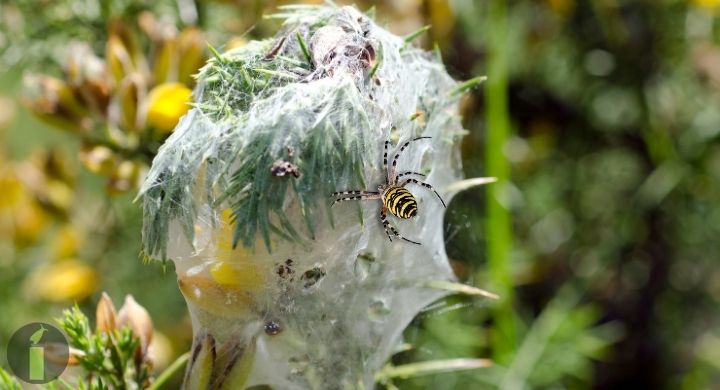
Size
Spider mites are minuscule, typically measuring less than 0.5 mm, or one-twentieth of an inch. They are hard to see with the unaided eye due to their small size.

Color
Spider mites can have colors such as red, green, yellow, brown, or even translucent, depending on the species and stage of life.

Webbing
Certain spider mite species cause their infected plants to weave delicate silk webs. The plant may appear dusty due to the covering of leaves by this webbing.

Feeding
In order to feed, spider mites puncture plant cells and remove their contents, which causes stippling, discoloration, and, in cases of severe infestations, leaf drop. They are especially troublesome when it’s hot and dry outside.

Rapid Reproduction
Spider mites have a brief life cycle and a high rate of reproduction in favorable environments. Throughout their lives, females can lay hundreds of eggs.

Favorable Conditions
Spider mite infestations thrive in hot, dry conditions. Their rapid reproduction and ability to flourish in warm climates cause population explosions.
Control
Using insecticidal soaps or oils, keeping an environment conducive to natural predators (like ladybugs, lacewings, and predatory mites), and routinely monitoring the area are common strategies for managing infestations of tiny green bugs such as spider mites. Water sprays with high pressure can also aid in removing and lowering populations of tiny green bugs such as spider mites.
Prevention
In order to prevent infestations of spider mites, it’s critical to preserve plant health, give plants enough water, and stay away from areas that encourage mite growth, like dusty ones.
Green Lacewings
Beneficial tiny green bugs in the Chrysopidae family are green lacewings. These insects are distinguished by their vivid green coloring and delicate appearance. Green lacewings are useful predators for reducing pest populations in agricultural and garden settings, both as adults and as larvae. The following are some essential traits and details about green lacewings:
Adults
Adult green lacewings have large, transparent wings with intricate venation, and their bodies are long and slender. Though some species may have shades of brown or yellow, they are usually green or pale green in color.
Larvae
Because of their insatiable appetite for aphids, lacewing larvae are frequently referred to as “aphid lions”. They resemble tiny alligators, having a segmented body with mandibles shaped like sickles and typically being brown or green in color.
Diet
Green lacewing adults and larvae are both predators.
Adults
Eats mostly nectar, pollen, and honeydew, but they are not as good predators as they were when they were larvae.
Larvae
Eat a range of tiny insects and their eggs, but especially enjoy aphids, mites, thrips, and other pests with soft bodies.
Lifecycle
The entire metamorphosis cycle of green lacewings includes stages such as the egg, larval, pupal, and adult. On plants close to areas rich in prey, adult lacewings deposit their eggs. The larvae actively seek out and devour pests after hatching.
Habitat
Gardens, orchards, and other places with an abundance of vegetation are common places to find green lacewings. For the nectar and pollen, blooming plants draw them in.
Commercial Use
Commercial green lacewings are sold to control biological pests. They are frequently introduced into agricultural environments to aid in the environmentally responsible management of pest populations.
Conservation
Green lacewing and other beneficial insect populations can be preserved through actions like cutting back on the use of broad-spectrum pesticides.
Tiny green bugs have benefits as well. By aiding in the management of pest populations, promoting the existence of green lacewings in gardening and agriculture can help create a more balanced ecosystem. Planting a range of nectar- and pollen-producing flowers in your garden will draw and support these beneficial insects.
How to get rid of tiny green bugs?
Tiny green bugs such as Aphids can be removed using the following methods:
Water Spray
Employ a powerful water stream from a hose to physically remove the insects from the impacted plants. This technique works particularly well for soft-bodied tiny green bugs like aphids and can be beneficial for minor infestations.
Insecticidal Soap
Spray low-toxicity insecticidal soaps to control tiny green bugs which basically have soft bodies. Pay close attention to the product’s instructions.
Neem Oil
Neem oil is a natural pesticide that can be effective against a variety of pests including tiny green bugs. It works by disrupting the feeding and reproductive cycles of insects. Dilute neem oil according to the instructions and spray it on affected plants.
Beneficial Insects
Introduce or promote natural predators that prey on tiny green bugs like aphids, such as ladybugs, green lacewings, or predatory beetles. It can be helpful to plant flowers that draw these helpful insects.
Diatomaceous Earth
Fossilized diatoms produce a powder known as diatomaceous earth. On and around plants, scatter it. By dehydrating pests, it can be effective against a variety of tiny green bugs.
Homemade Remedies
Apply a water and mild liquid soap solution (without bleach or other additives) to the afflicted plants by spraying them down. This homemade insecticidal soap may work well.
Companion Planting
An organic way to keep pests away from vulnerable plants is to plant specific herbs or flowers nearby. For instance, marigolds ward off a variety of tiny green bugs.
Organic Pesticides
Use specialized organic insecticides to deal with the kind of pests you have. Observe the directions on the product label at all times.
Pruning
Remove and properly dispose of plant parts that are heavily infested. This can minimize the spread of infestations and help lower the number of tiny green bugs.
Sticky Traps
Place sticky traps close to the impacted plants to capture flying insects. These traps can aid in population control even though they don’t specifically target tiny green bugs.
Keep in mind that routine plant monitoring is essential to the successful management of tiny green bugs, as early detection and intervention are critical. Additionally, since healthy plants are better able to withstand and recover from pest attacks, make an effort to promote overall plant health through appropriate soil management, fertilization, and watering.
Read More: Easy Ways to Get Rid Of Little White Bugs That Look Like Lint
Frequently Asked Questions (FAQs) about Tiny Green Bugs
Listed below are the most commonly asked questions by people about tiny green bugs.
Q1. What are the tiny green bugs?
Aphids are wingless, tiny green bugs, pear-shaped insects that live in colonies and feed on the new growth of almost any plant they come into contact with. Their colors can range from yellow to red, black, brown, or green. When numbers are high, some may develop wings to enable them to migrate to different plants.
Q2. Are green aphids harmful?
As soon as you see indications that aphids are growing among your plants, you should take immediate action. They don’t directly harm people or pets, but if you allow them to proliferate, they can quickly outcompete your plants because of the rapid rate of reproduction of these tiny green bugs.
Q3. How do I get rid of tiny green bugs?
Use a powerful garden hose stream to spray a powerful stream of water off your plants.
A strong downpour can remove tiny green bugs (aphids) as they are very tiny and delicate. Once they fall they can seldom climb back on plants.
Q4. What happens if tiny green bugs (aphids) bite you?
When a tiny green bug (aphid) bites, it causes a red swelling that goes away in about an hour, but the rash that results is extremely itchy and can last for two to three days. Steer clear from the infected trees.
Q5. What kills tiny green bugs (aphids)?
In most cases, the best options when using insecticides are insecticidal soaps and oils. Plant-derived oils like canola or neem oil, as well as horticultural oils derived from petroleum. Cover infested foliage thoroughly since the main method of death for these products is suffocation of the aphid.



